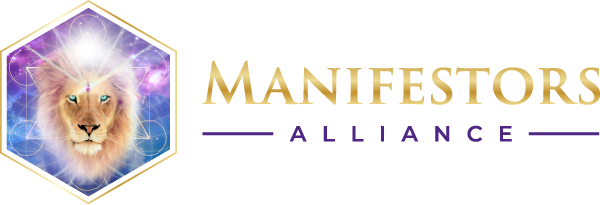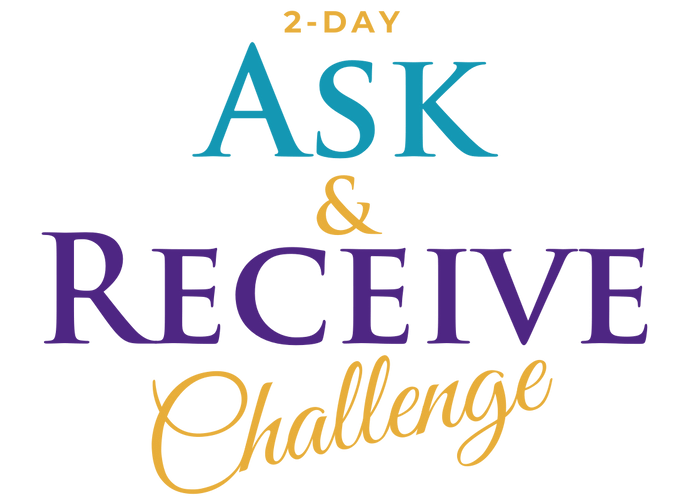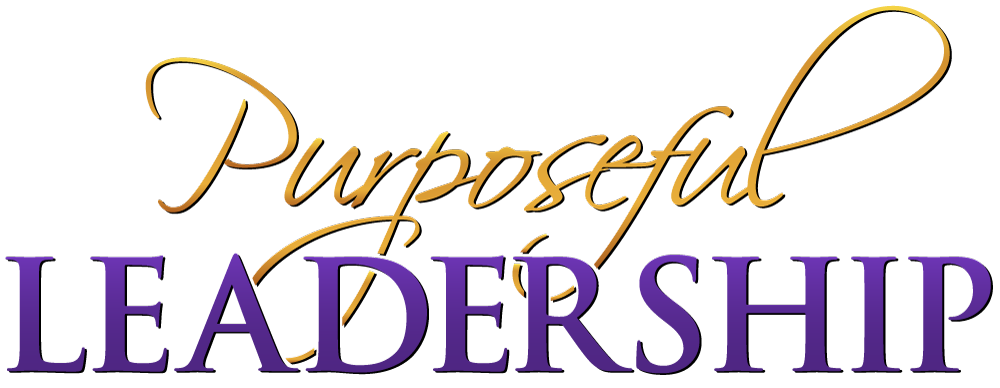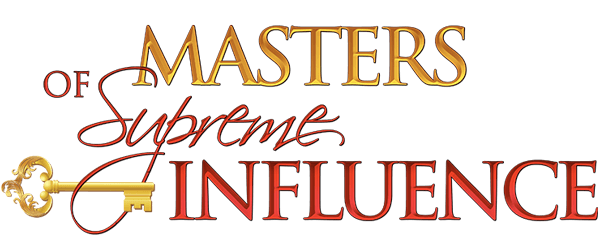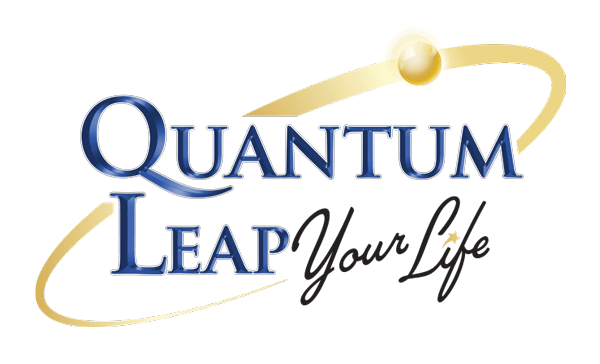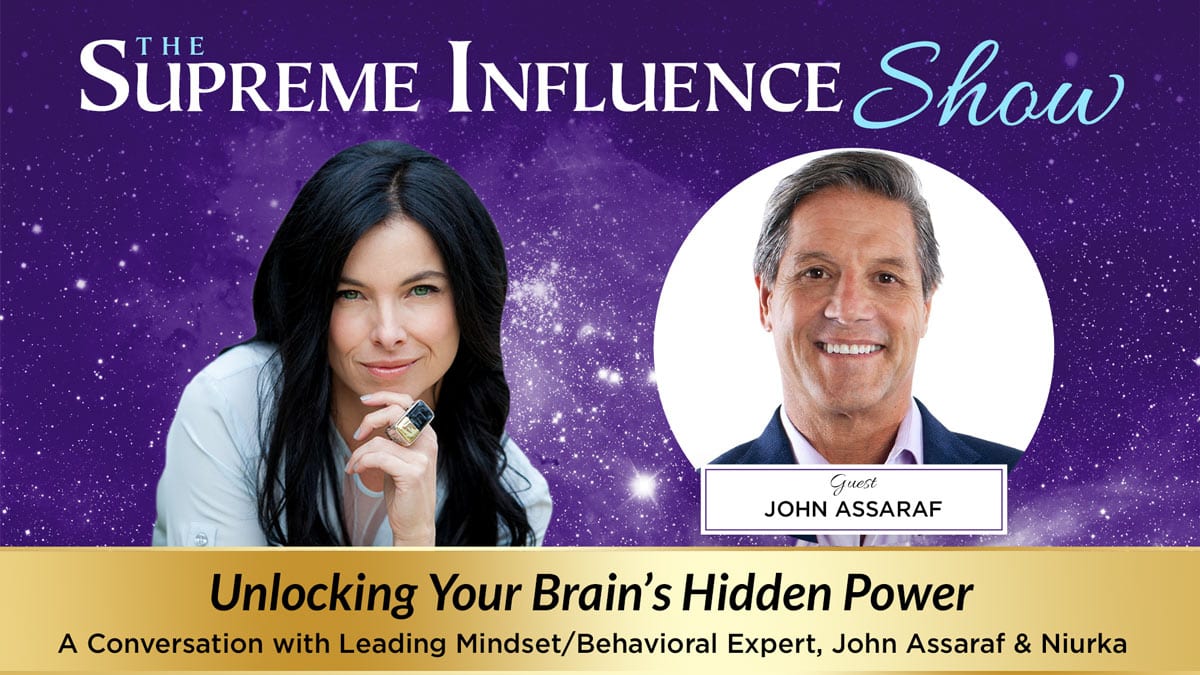
SUMMARY & SHOW NOTES:
- If you’ve been feeling stuck or blocked, or know there is another level of success or fulfillment for yourself, your family and your business, this episode is for YOU. It’s a conversation on how to unlock your brain and really tune into your hidden powers.
- John developed Innercise, which are exercises for the brain to strengthen core neuro muscles vs. physical muscles.
- Our Brain is our most powerful organism, but we weren’t taught how to use this most powerful tool in the known universe. Our brain circuits can be constructive or destructive; empowering or disempowering. Innercise provides a framework to strengthen your mindset and emotional skills and abilities. How to have a stronger brain that works FOR you instead of AGAINST you.
- In the first exercise of Innercise: Take 6, Calm the Circuits, we use a breathing technique that will lead to awareness vs. reacting to a negative thought. Awareness is what gives us choice and choice gives us freedom. You can teach yourself to choose empowering, constructive, productive ideas, thoughts, emotions or behaviors.
- Genetic code is passed onto offspring, whether it be positive or disempowering. Epigenetics says we can override the genetic predisposition through our environment and our thinking.
- We all have a Money Story which started when we were very, very young and developed through our past. This story is the basis for every decision we make about what we do, how we do it, how much you should tip, whether to fly first class or economy. Some Money Stories give us freedom and some are just disempowering. You can change your identity, beliefs and your Money Story as quickly as you develop them. Until you change the pattern, everything is going to stay the same.
- Innercise is especially important during times of chaos. We can update the software of our brain to adapt to challenging times. It’s just understanding how to use our brain just a little better, a little more efficiently, a little faster, a little easier so we don’t have to consistently struggle and be in a total state of stress all the time. It’s more confidence, more certainty, more personal power, less stress, less anxiety, less fear. It helps people to have predictable transformations during these uncertain times.
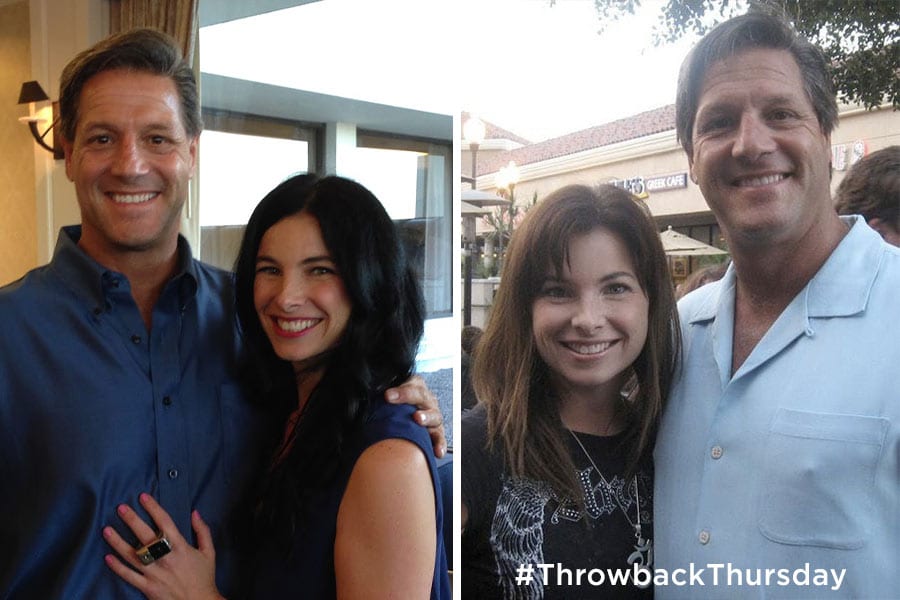
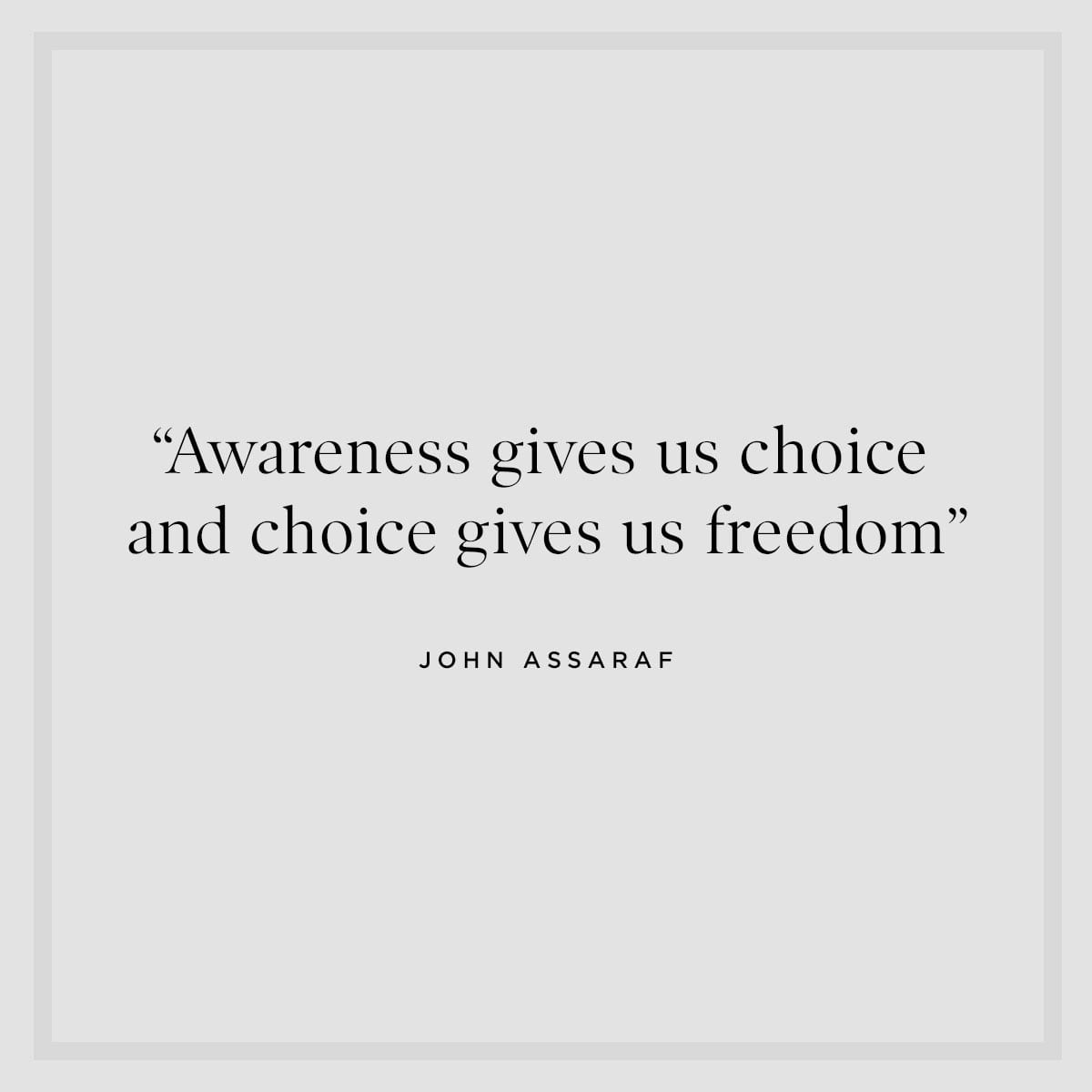
TRANSCRIPT:
Unlocking Your Brain’s Hidden Power – A Conversation with Leading Mindset / Behavioral Expert John Assaraf & Niurka
Today we have a very special guest, John Assaraf – is one of the leading mindset and behavioral experts in the world. He’s appeared numerous times on Larry King Live, Anderson Cooper and The Ellen DeGeneres Show.
Revealing How To: Unlock Your Brain’s Hidden Power, which is our topic today…based on the wisdom of his latest book – Innercise, which offers us a Proven Science that guides individuals from all walks of life – to recognize and release the mental and emotional blocks that prevent them from achieving their Highest potential.
If you’ve been feeling stuck or blocked; or if you know there is another level of success and fulfillment for yourself, your family, and your business… you’re going to LOVE this Episode because it not only gives you profound insight, it also gives you techniques that you can apply right away to become even more clear, centered, and empowered to take intelligent action for the greatest results.
John teaches from real world experience…
He’s a serial entrepreneur who’s built 5 multimillion-dollar companies, including taking one public on the NASDAQ, and growing Re/Max of Indiana to $4.5 billion a year.
Today, he’s the Founder & CEO of NeuroGym, a company dedicated to using the most advanced technologies and evidence-based brain training methods to empower you to strengthen your mindset and emotional skills so you achieve your goals faster and easier than ever before.
John’s written 2 New York Times Bestselling books that’ve been translated to 35 languages; he’s been featured in 10 movies, including blockbuster hits with Richard Branson and the Dalai Lama.
AND, he’s a dear friend.
I’m blessed to have known John for over 15 years.
He’s been gracious to speak at my live events, where he’s delivered riveting presentations, and share his wisdom with our community.
& I’m inspired to bring you John’s insights and strategies on today’s episode.
So let’s get started….
Hi John, Welcome, thank you so much for being with us.
John:
So great to be with you.
Niurka:
It is delightful to see you. I am so enthused about everything that you’re bringing into the world, that I’m really excited to dive in on this most essential conversation on how we’re going to unlock our brain and really tune into these hidden powers. And share with me a little bit about… I love that you’ve coined the word Innercise, because so many times you see people, they’re so focused on the body and exercise and to really tune into the inner workings of what creates our experience of reality and the results that we produce. Share with me a little bit about Innercise and some examples of how everyone listening can practice these powerful techniques to really take their results to a whole new level.
John:
Sure. The whole idea came to me in watching some of the old I guess marketing by Jack LaLanne when he was bringing exercise to the forefront, in the ’50s, in the ’60s. And at first everybody was giving him a hard time and doctors were even saying that if you exercise, you’re going to shorten your lifespan and you’re going to deteriorate your bones and you might get muscles initially, but then they’re going to turn to fat. There’s all these misconceptions about exercise.
John:
But he popularized it and he showed people that you can strengthen your internal organs, your oxygen capacity, your muscles, your ligaments, strengthen everything. And so for most of my, I guess adult life for 40 years now, I have been doing brain training. I call them Innercises to strengthen my core neuro muscles, which is what I like to call them. And so when we think of-
Niurka:
I love that. The neuro muscles.
John:
Yeah, so we have physical muscles. Well why not neuro muscles? We know we have different networks in our brain. We have different circuits in our brain. We have something that we call, self-image, we have something called self-esteem. We have language patterns, some are constructive, some are destructive, some empower, some don’t. How is that any different than our physical world? And so in the research that we’ve done, we know that we can strengthen neuro muscles.
John:
We know that we can deactivate disempowering ones. And so I wanted to really dive deep into giving people a framework so they can strengthen their mindset. They can strengthen their emotional skills and abilities, so that they have a stronger brain that works for them instead of one that works against them. And I always have my plastic brain on my desk.
Niurka:
I love it.
John:
Right. And we know it’s the most powerful organism, not organ, but organism in the whole universe, but there’s no users manual. But we weren’t taught anything about it in kindergarten grade school, high school. We weren’t taught much about how to use the most powerful tool in the known universe and we own one. We own one. Don’t we? So we go fumbling around trying to pilot ourselves through life and we stumble and fall most of our life.
John:
And so I wrote my newest bestselling book Innercise as a way to give people some foundational understanding of here’s what this beautiful organism is. You own it, just learn how to use it a little bit better with these Innercise techniques. And that’s the whole idea behind it.
Niurka:
I love it. So we’re like pruning these old synapsis. Right? And creating new neural pathways. And-
John:
Actually, we prune in the early years of life, but we deactivate in the older years of our life. So if you have a habit of smoking, for example. I don’t know why that habit came, but if you have a habit of smoking, you basically can deactivate that network that exists, but it never just goes away. It’s there but if you create a new habit that’s more powerful than the old one, the new habit gets all the attention that you bring to it.
John:
So we don’t necessarily prune as in the sense that that happens, at birth when we have 100 plus billion cells. And 15, 20% of those are pruned, in the first couple of years of life. But as adults, we can create based on the latest in neuroplasticity, we can actually create a new pattern, a new formulation of connections. Then if we reinforce that, based on the hierarchy of how the brain pays attention, how the brain uses energy, it then gives you the network that is more empowering if you know how to activate it and activate this neuroplasticity switch.
Niurka:
I love it. So you’re going to be given us some insights into this switch,
John:
I just wanted to understand the mechanics. I really love Chemistry and Biology and I want to understand what’s really going on there and how do we do it faster and easier than ever before.
Niurka:
And I know you’ve been doing a lot of work with other experts like Dr.Amen, and really looking at different brain scans to really see what’s going on. It’s like lifting the hood.
John:
Yeah. For the last 10 years with a lot of the world renowned experts, Dr. Michael Merzenich, Dr. Jan Swanepoel, Dr. Joan Rosenberg, a lot of the people that are doing the research on the research. I’m fascinated, especially in today’s day and age, there’s so much stuff out there. And even the stuff that some of the medical community puts out, are not researched well enough to say this is evidence-based.
John:
It may be opinion-based but it’s not evidence-based. So you really have to go a little bit deeper than the surface to define the real stuff that’s actually got the double blind studies and can show the efficacy of what is working versus what isn’t.
Niurka:
I love it. And you’ve been practicing this for a long time. I’m sure you’ve brought this into all of your entrepreneurial ventures and your successes over the last several decades.
John:
I have. I was taught a different way of thinking and being and changing when I was 19, because I was getting into so much trouble with the law and doing a lot of illegal things and things I’m not proud of. That’s 40 years or maybe 45 years ago. And so I changed and I was fascinated with, “How?” I know what I did, right? And I know the results, but what I didn’t know is what actually happened on the inside. And so I’ve spent the last 40 years applying and researching, but also coming up with simple easy ways to explain stuff. So if you’ll go, Oh, I understand, I get that, and that’s-
Niurka:
Then they can apply it.
John:
Well, the whole idea is I want to know, I’m not the type of person that if somebody says to me, we’ll do this. I just don’t do it. I go, why?
Niurka:
[crosstalk 00:07:27]. Tell me why.John:
Why? Show me why this is a good way. Where’s the evidence for it? Show me some proof of some kind, then I’ll do it. Great. But I don’t, I really stopped listening to opinions a long time ago. I really started focusing on people who are as dedicated to excellence as I am, and I know the amount of time and energy and focus it takes to get to a level of expertise versus, “Oh, try this. I don’t want to try that.” I want to do what works. I don’t want to try that. I want to just do what works.
Niurka:
And the quickest, most direct route. So this is super exciting-
John:
Efficiency right, efficiency.
Niurka:
Completely, efficiency and then create space for greater joy, allowing us to focus on all the things that are most important to us in life.
And I’m really excited because every single person listening, if there’s something that you want to change, like if you want to change your relationship with money, if you want to change your health and vitality, if you want to change your relationship with somebody that you love. Or if there’s something in your life like John’s talking about, where 45 years ago, he was looking at things in his life going, “Hey, this isn’t working.”
Niurka:
This is specific, proven, evidence-based wisdom, knowledge and techniques that you can begin to apply in your own life to create profound breakthroughs and lasting change. And that’s so exciting. So we’re talking about the brain
John:
Yeah, just a couple of different parts of the brain you can take apart. Yeah, it’s a pretty fascinating study, right? It’s just in the last 20 years that we’ve had the technology to actually get a glimpse of what’s actually happening in our brain in real time. So, up until then, we’re basically trying to figure it out looking at cadavers and dissecting cadavers. But now we can say, okay when you’re in a state of fear, okay, you’re afraid of a failing or being embarrassed or ashamed of being ridiculed or judged, like what’s happening in your brain? What’s happening to the motivational center of the brain?
Niurka:
We’re seeing a lot of that now, going on.
John:
Where is my goodness here? Where is the motivational center of your brain? What circuits are turning on? What circuits are turning off? Where’s the blood flow going? What’s it doing to the motor cortex, the part of your brain that’s going to actually help you take action or run away? What’s happening to, in what I call is… And I showed you this earlier, this is the Frankenstein part of the brain, right? Versus the Einstein part of the brain.
John:
Like, where is that? If your brain is an organism with a variety of different, what I call orchestra members, right? We have the fire chief, we have the engineer, we’ve got the motivator, we’ve got the-
Niurka:
A whole village inside of you.
John:
We have a whole village. And that’s what people don’t understand is that they think that they’re alone. If they have negative thoughts. No, we all have negative thoughts or if they’re too optimistic or pessimistic, or-
Niurka:
Would you say the challenge with the negative thoughts is that people become too attached and identified to them?
John:
Yeah. First and foremost, most of them don’t understand that you weren’t born with any thoughts, you weren’t born with any beliefs, any habits, any perspectives, any paradigms. Zero, zero, zero, all you were born was with, some genetic code to keep you alive, to digest your food, to synthesize, the hydrogen, oxygen, nitrogen and carbon that you’re inhaling every day to put it into the location that you need.
John:
So there was some basic fundamental programs that you were born with that have been evolving for billions of years. And then two and a half million years of us being, in one form or another from Homo erectus to Homo sapien. Now we developed all of the other stuff. And so when somebody says, “I have a lot of negative thoughts.” I say, “Well why? Where do they come from? Do you know what they are?”
John:
What if I shared with you that your negative thoughts are nothing more than patterns in your brain, that percolate up like effervescent bubbles, in your soda glass. And some are positive but most are negative, because of the hierarchy of how your brain works. What if I said to you that you don’t have to believe those thoughts? What if I said to you, you don’t have to believe these emotions, and you can through some Innercise practices, become aware of thoughts and train your brain to let go of the ones that don’t serve you. And to reinforce the ones that do. So that there’s an opposite balance where you’re mostly positive and sometimes you have these negative thoughts. What if I share-
Niurka:
And is the portal of the breath for that?
John:
Well, the portal for that is mindfulness and awareness. One of the ways to get into an aware state is to first and foremost deactivate the sympathetic nervous system. Which is what also activates our Frankenstein brain. And to do that, yes, you can use breath. So for example, in the work that I teach, the first Innercise I teach everybody is called Take 6 Calm the Circuits. So I gave everything a name.
John:
So it’s Take 6 Calm the Circuits and so what does that mean? It means if you have a lot of negative thoughts, if you have a lot of disempowering emotions, if you’re frustrated, angry, upset, doubtful, stressed, anxious, panicky, stop, stop for just a moment. And just take 60 breaths as slowly as you can in through your nose. And then even slower coming out through your mouth as if you’re blowing out through a straw.
John:
And if you close your eyes and you just focus on the airflow at the tip of your nose and the exhale of air at the tip of your mouth as you’re puckering like a straw, six of those, I can show you, If I put your brain and you under an FMRI, Functional Magnetic Resonance Imaging machine and I took an image of your brain while you’re doing that, we would see the blood flow move away. Okay? From the stress and fear centers of your brain.
John:
We would see the blood flowing back to your imagination, your creativity, your intelligent part of your brain. We would see the sympathetic nervous system deactivate and your calm and respond nervous system. The parasympathetic nervous system would actually reactivate. So in that state, instead of reacting abruptly and repeating this stress cycle and reinforcing it, you can actually be aware of it.
John:
Deactivate it and activate the common response part of your brain, which now allows you to move to what I call Innercise number two, and that’s called AIA, A-I-A and AIA stands for awareness of thoughts, emotions, feelings, sensations and behaviors. And when you do this in a state where there’s no judgment, blame, shame, guilt, or justification.
Niurka:
Imagine living that way. Everybody.
John:
Right?
Niurka:
Full on.
John:
Yeah, no judgment, blame, shame, guilt, or justification, just awareness, awareness. Let me just be aware. And the premise is this, and it’s the truth. Awareness is what gives us choice and choices is what can give us the freedoms that we want. And so if we are in a state of awareness of those things, and then we say, okay, now that I’m at choice, the “I” stands for intention. What is a simple intention I have right now? My simple intention is to be positive.
John:
My simple intention is to be calm. My simple intention is to feel good. Okay? Then what’s one simple action step I can do to be positive? I could smile and look up. I can’t feel shitty looking up and smiling. It’s just impossible, I’m going to smile and look up. You know what, I can put on some music. I like, I can get up and move around and change my state. I could do a lot of different things.
Niurka:
Go for a walk; enjoy nature.
John:
Right? So in this state of calmness where I can respond in a state of awareness where I can choose, I can now teach myself to choose empowering constructive, productive ideas, thoughts, emotions or behaviors. So now who’s in control? Now is that my old brain that is wired to find everything wrong in my environment? Is it my Frankenstein brain that is percolating up everything in its memory bank? Okay, that could go wrong. That could cause me discomfort. Whether it’s mentally, emotionally, physically, spiritually, or financially.
John:
It is wired to do that. Like why would I want to deactivate that? That would be like deactivating a sensor in your car that lets you know that there’s no tire in your front left tire. No, you want the signal because it’s so phenomenal, but you don’t want the signal to control you. You want to be able to be aware of the signal and say, “dismissed”. Don’t need you right now, I know what’s going on. Right? And so now we are in a state of-
Niurka:
And to recognize when it’s rational or even irrational?
John:
Correct. But the key is… Here’s what I do know. For the most part, if your life is on the line. Trust me, you’ll jump out of the way. Right? So there aren’t very many things that can actually kill us right this second.
Niurka:
There’s no saber tooth tigers coming after us
John:
Right this second. And so if it’s not going to kill us right this second or this minute, wouldn’t it be a smart skill to learn, to be able to learn? How can I be more in control and responsive versus less than control? And this is no different than if you’re out of shape and you say, “Holy, macro I haven’t taken care of myself in a while. I guess I need to eat better and exercise, and maybe meditate,” I mean, right? So we have to practice that to get better. Well, Innercise with practice, you become better and you can’t fail at it.
Niurka:
And it’s really the foundation. I see so many people that want to change, but they’re changing from the state of Frankenstein or they’re intending or they’re wanting change from there, which is why they keep looping. So this is really the foundation of creating intentional change in every aspect.
John:
Intentional and lasting change.
Niurka:
And lasting change.
John:
Intentional, because our brains… A lot of my clients tell me, “I don’t have discipline”. I go, “Oh, yes you do. You’re 100% disciplined. I actually want to give you a high five.” “What do you mean?” I said, “You’re disciplined 100% to your existing thoughts, your existing emotions, your existing behaviors and your existing results. You’re a miracle. You’re so fucking disciplined.” I said, “Now you may be disciplined to destructive or constructive or mediocre things, but you’re 100% discipline. Your brain’s a miracle of how it’s keeping you doing that stuff over and over and over again, even when you don’t want to.”
Niurka:
So they haven’t discovered a new way yet. One the things I say to my students is that if you’ve been driving this certain way to work every single day and it takes you 15 minutes and you’re used to going that way, then all of a sudden you discover a new way to go. How long does it take you to embrace that new way you’re teaching people this new way, this new, faster, efficient way.
John:
We call it a neurode.
Niurka:
A new rode?
John:
N-U-E-R-O-D-E. Right? New rode.
Niurka:
I love it. Yeah, that’s cool.
John:
Here’s the other thing that we teach our students, and I’m sure yours know this or this will be, “Oh, I didn’t know that”. When I was growing up and got into business and I was being taught some of the stuff that I was doing. The word of the day was 21 days to develop a new habit. Well, that’s not true. It takes 66 to 365 days to create a new pattern that overrides an old pattern and is the dominant pattern.
John:
So the university of London last year came up with some new research on how long does it actually take for an implicit memory, an implicit pattern to dominate another implicit pattern. So if you imagine, you have one arm that you can lift 20 pounds with and the other arm you’re rehabbing. So if you stop lifting with one arm, you just start lifting with the other hand. You do one pound, one pound, one pound, one pound, one pound, then two pounds, two pounds, two pounds, two pounds. Then three, then four, then five and six over a course of a 100 days. You know that muscle gets stronger, well the exact same thing happens in our brain.
John:
If we keep firing the same neuronal pattern for 66 days, at least, I tell all my clients, if you aren’t prepared to what I say, Innercise or retrain your brain as I teach you the skills and the strategies and tactics, don’t even start because you’re going to blame me or my programs in my consulting. But if you’re prepared to do the Innercise, in conjunction with the other stuff and you’re prepared to give me 100 days. I can pretty much guarantee that you will change and you’ll achieve the results you want. But if you’re not prepared to do that for a 100 days, then go do something else. Come back when you’re ready.
Niurka:
I love that. And it’s interesting how, basically you’re calling people to the commitment of what’s essential to have this integrate fully. And it’s amazing to see how many of these different incorrect ideas are out there. Like the 21 days to a new habit. What about, you’ve also heard people talking about, “Oh we only use this particular percentage of the brain,” can you speak into that?
John:
We use 100% of our brain every 24 hours. But, I mean the thing I’m going to come back to is when we didn’t have the science, we had opinions, right? And now we have the science so the opinions can go by the wayside. But the opinions became a part of our mythology.
Niurka:
And we’ve learned more about the brain in the last 10 years than we have in…
John:
The history of the species.
Niurka:
Think about that.
John:
There’s been 108 or so billion humans on earth, right? There’s about 7.8 billion right now. So there’s a 110 billion people that have lived on earth. Okay? That had a lot of misconceptions and ideas. And so the new understanding is what I’m sharing right now. Now there’s going to be another dimension coming up right now, because right now there all already brain to computer interfaces.
John:
So when we all watched, or many of us watched the movie the matrix, and Neo was sitting in that chair and this little thing plugged into his head and all of a sudden his eyes then he goes, “Oh, I know Kung Fu.” Kung Fu, what is Kung Fu? It’s a bunch of bits of information coalesced into a certain pattern. And if our brain is processing bits of information in certain patterns, is it possible to decode patterns of electrical activity?
John:
Of course, it is. Is it possible to insert electrical activity and chemical activity or chemicals into the brain? Of course, it is. We don’t know exactly how to do it yet, but imagine 500 years from now, we’ve only been doing science for 500 years. So imagine 500 years from where we are today and what we know about CRISPR technology and DNA and brain to computer interface.
John:
Where right now there are experiments going on where, I might have a headset on and you’d be halfway or the whole way around the world, and through me thinking about something, I could have your arm move because you’re connected to your computer and I’m connected to another computer around the world. It’s already happening. So for the time-
Niurka:
This brings up such fascinating-
John:
Oh yeah.
Niurka:
…conversations. Are we going to upload these devices into our brain to be able to tap into the cloud?
John:
In some way it’s already happening, right? I mean, if you think about, go back-
Niurka:
There’s potential you’d look at people like, Elon Musk is out there talking about his concerns and fears about artificial intelligence. What are your thoughts? Are you going to get your augmented brain tapped into the cloud?
John:
When it’s safe, yes.
Niurka:
Beautiful.
John:
I mean, think about this, you can use a car-
Niurka:
Fascinating what is happening with the exponential technology.
John:
… you can use a car to drive around the world or to drive around the country. You can use a car to kill somebody. You could use a knife to make incredible sushi, or you could use it to kill somebody. You can use a microwave to heat up food or to cook a human. You can use nuclear energy to bring light to an entire city, and energy in that entire city or to nuke an entire city.
Niurka:
So this would be why brain and heart coherence is so important.
John:
Brain, heart and gut, right? Because the gut microbe is just coming into play. And so how do we create that coherence between the three? I’m going to go back to awareness. Let’s go back to that calm state of awareness. We can actually remember and get back in touch with the miracle that we are.
John:
I think we forgot somewhere along the way that… And let’s leave religion out of my next comment. But we are spiritual. And for me what that means is, if for two and a half billion years, humans have walked on earth in some capacity and that intelligence is in my DNA cells. And if the gold that’s in my body came from the furnace of a star that exploded billions of years ago. That means that that intelligence is within me.
John:
If my DNA is not unraveling right now, as I’m speaking with you and digesting the salad I had before we got on this call. And taking in air, hydrogen, oxygen, nitrogen and carbon and knowing exactly what to do about 10 million cells dying, 10 million new ones come online, and my brain is creating these new neural networks. And I’m watching you and you’re hearing me and I’m hearing you all this miracle is you. It’s me, it’s us.
John:
Let’s operate from that place of remembering. And then let’s say, well, there’s a 100 trillion cells coalesce to form the center being called a human body. And I can move my hands and talk and smile. And I have emotions and I have these mental faculties and oh yeah, I have this physical body, right? So that’s the lowest part of the totem pole. But I’ve learned to play there so much that we’ve forgotten what and who we really are. And how we are connected and we’re all geniuses and brilliant and we can change and we can do so much more and be so much more and give so much more and have so much more. That’s the game I want to play.
Niurka:
I love the game. I love playing this game with you. This is a space of infinite possibilities.
John:
That’s right.
Niurka:
It’s like so many times people are fixated on, like you’re talking about the body, which is on the lowest part of the totem pole and really tapping into this infinite realm that is within you, realizing from awareness how we’re all connected. I think that’s something that blocks people a lot too, is this idea that I’m separate from you, and I’ve got to win. And if I don’t get this, then this means that. And they have these beliefs that they get. One of the beliefs I see come up a lot that blocks people, is this belief or this pervasive, or maybe even the subtle idea that they’re not enough of something, not good enough or not-
John:
Not good enough, not smart enough.
Niurka:
Not smart enough or not…
John:
Yeah. You’re too young, too old, too Asian, too-
Niurka:
Where does that even come from?
John:
Well let’s first agree that it didn’t come from when you were born. It came after you were born. So we didn’t have a self-image when we were born. We didn’t have a belief when we were born. We didn’t have habits when we were born. We didn’t have fears except we reacted to loud noises when we were born. It was an instinctual reaction to noise. So everything after that was learned.
Niurka:
What about if somebody has in their lineage, let’s just say for example, their great, great, great grandfathers and grandparents experienced famine, and they have that experience carried down genealogically?
John:
Sure. So I have a genetic possibility or propensity, right? So what we know is, yes, that information in the recent studies with laboratory rats, where they take a female rat and they put her through one of the most difficult mazes that she’s ever been through just to get some food and water. Let’s say it takes her 12 hours the first time, 12 hours the second time, 12 hours a third time, 10 hours, 8 hours, 6 hours, 4 hours, 2 hours.
John:
She passes on that code to her offspring, first-generation. So they do it in two hours. So we know that to be true. So let’s say that there’s some positive stuff we get and there’s some disempowering gifts that we receive from our parents, grandparents, and all the way back. Here’s what we know. Epigenetics says that we can override the genetic predisposition to anything through our environment and our thinking. So even-
Niurka:
So definitely the science of epigenetics, that fires me up because it shows how these genes are not deterministic, that our environment, our lifestyle-
John:
Our choices.
Niurka:
… our choices, the environments that we create for ourselves influence what genes fire, and-
John:
That’s right. If you look at just the United States, if you take a look at people who are impoverished and on welfare, most welfare recipients are fifth, sixth, or seventh generation welfare recipients. So they’re born with a genetic predisposition, and then they’re in the environment that reinforces it, activates it, and reinforces it. And so this is their environment. And yet there’s still people who are able to get out of that environment and make something better for themselves.
John:
So what we have to remember is, in this selective genetic code that we have, we all have the propensities for good things, challenging things, empowering things, it’s every human being. It’s not like, if my father wasn’t wealthy, then I’m going to be somebody who’s who’s poor. No, the propensity of all of the possibilities are there. It’s no different than character traits. There’s 2,600 different character traits. And so when you see something in somebody, that you haven’t yet accepted a piece of the hologram that is in you.
Niurka:
think about how many people pass you by every single day and you don’t even notice. It’s like they just walk by, but then there’s some that really stand out in your attention. So it’s usually exactly something you’re not seeing within you, or something that you really admire within them, that you’re inspired to have emerged even more.
What about when somebody has a trauma in the womb?
John:
In the womb?
Niurka:
Yeah. So let’s just say somebody… There’s an embryo in the womb and they experience some level of trauma. There’s an accident, something happens. How does that-
John:
It wires the neurons that fire together wire together, right? So if there is trauma, whether somebody is abusing drugs, somebody is physically hurt, any time we’re experiencing anything, any emotion, trauma equals some kind of emotion, the neurochemistry of that emotion is released in the brain, and that travels into the bloodstream and mother and baby are sharing. Okay, all of the emotions. And so the blood brain barrier is one thing. But I think emotional trauma is another thing.
John:
I think every one of us has experienced, and will experience before. We came out of our mommy’s belly, and after we came out and we grew up. And so we all have this plethora of positivity, negativity, traumas and things that are working, cohesively in our lives. Now some of it will provide us some of our greatest lessons.
Niurka:
And wouldn’t those traumas though affect how… We were talking about having that baby come out like a blank slate. How would that trauma affect that moment of birth and those early formative years?
John:
I think it is very, very challenging for some and not for others. So I’m not a specialist on that side of entering the planet. But just in understanding a little bit about the neuroplasticity and the memory of emotions, right? Our painful memories formulate neural networks. And this is not a factual statistic, I just use this number to make a point. So if you have a positive experience, let’s say it’s worth 10 points. If you have a negative experience, it’s worth 10,000 points.
John:
And so we remember negative, painful memories 10,000 times faster than a positive one. And the reason for that is because the brain is wired for survival and the avoidance of pain first above all else, right? So if we experience mental, emotional, physical, spiritual, financial pain, real or imagined, our brain wires that, and encodes that for the survival mechanism to work, because it’s survival above all else.
Niurka:
Wow, that is such a key point. And I really want to emphasize it for everybody that’s listening, who’s like a leader or who has teams, or who’s building a team. On how mindful it is in how we communicate and empower people. Because if it’s 10,000 times worse if somebody’s getting that message. Now, could you imagine you’re leading organizations or you’re leading thousands of people, how important it is to really-
John:
Right. And once that memory is formulated, right? It’s part of the implicit memory. And guess where Frankenstein goes for reference? Right there first. And so that’s why anytime, whether you’re dating or you’ve got a trauma physically, emotionally, and mentally or financially, whenever you even consider the opportunity to dive back in, Frankenstein comes up and starts through rationalizations and self-talk. You start to hear yourself telling yourself rational lies. “No, I don’t really need it. Don’t want to do it right now. Let me wait till later.”
Niurka:
Do it tomorrow.
John:
And we sell ourselves out of taking action and moving forward because of an old memory from maybe when we were kids.
Niurka:
I love it. So I want to talk a little bit about money because I know you really guide people to have huge breakthroughs around that. And I see so many people have beliefs around, they want to create prosperity, they want to create abundance in their life, but they have these beliefs that block them. What are your beliefs on money?
John:
I’ve got a lot of beliefs around money, but the overarching belief is that there’s more than enough for everybody at all times. So that’s overarching. Another one is I believe that I have the ability, the knowledge, the skill and the intelligence to earn as much as I choose.
Niurka:
I love that.
John:
There’s a couple of things that are worth diving into with you around money. And there’s two types of beliefs that people have. One is explicit, one is implicit. So, “I believe I can make a lot of money,” and that’s an explicit declarative belief where they can declare it. But if the implicit belief is, “But I’m not good enough, but I’m not smart enough, but I’m too young. I’m too old, I’m too Asian. I’m too Caucasian, but I’m a woman. I’m too young. I’m in school.” Whatever the underlying implicit belief is.
John:
Whenever we have a belief that we can declare at the conscious level, but we have an opposing belief at the subconscious level, we will sabotage all of our efforts towards that belief. So until we get that cohesive-
Niurka:
It’s roller coaster results.
John:
Yeah, it’s one foot on the brake, one foot on the gas, and there’s a lot of movement going on, but the car’s not going anywhere.
Niurka:
It’s exhausting.
John:
It is exhausting. But our beliefs are also tied to our identity and our money story. So money and the story that we have around money started when we were very, very young. It happens to be one of the longest, grandest, relationships we have ever had. Why? Because when we think about survival of the fittest, money also represents survival, right? Food, shelter, survival first, gain pleasure second.
John:
So if you have money since the beginning of time, whether we used coins or chocolates or sea shells to barter back and forth for seeds for fruit, we were able to have our creature conference. But as we moved further away and as the world expanded, we started to develop a different understanding of money. And so people have this money story based on their past. I’ll give you a perfect example.
John:
One of my private clients is a highly, highly successful CEO with a company worth about half a billion dollars, privately held company. And so we were talking last night about money and he pays himself a salary that’s very, very modest. And he just raised $125 million for his company for growth. He didn’t pull any money out, from the round of financing that they did. And I said, “But why do you pay yourself so little? Why didn’t you take, 20, $30 million off the top?”
John:
And he started telling me his story. I said, “Oh wow, that’s really fascinating.” And when I dove a little bit deeper, I said, “Tell me your family’s story about money.” He was, “Oh, why do you ask?” I said, “Just tell me were your parents wealthy?” “Oh no. But my grandfather was.” “Oh, your grandfather was?” He says, “Yeah. And when he died, we were all very close. We all got together, we all got together every weekend for meals and we traveled all over the world. He took 50 of us every December on trips. And then when he died, all of the brothers and sisters fought like crazy.”
John:
And I said, “Well, how old were you when that happened?” He goes, “About 14, 15.” So what did you believe to be true about money? He says, “Well, sometimes when you have a lot of money, it ruins families.” Now he had just told me that his number one value was family. Just seconds before that. So now I said, so your number one value is family, but you don’t want to have any money, because you’re afraid that if you do, you’re going to break your family apart. He goes, “Holy shit, I never ever thought of that correlation.”
Niurka:
He hadn’t made the connection, hadn’t connected the dots.
John:
Hadn’t made the connection. And so when we talked about money, we all have a money story. Is it good? Is it bad? How much do I tip? What kind of rooms I get in a hotel? Do I travel in the front of the plane, and in the back of the car, or would I buy the cheapest seats available? Do I tip 10% or 50% of 20%? Every decision we make about what we do, how we do it, how much? Should I shouldn’t? Is based on our money story, and some of us have empowering money stories and constructive that gives us freedom and others, okay, by no fault of your own for the most part just so you know, we just have a very disempowering story around money. When in reality, money is just a fricking means of exchange. That’s all it is.
Niurka:
It’s energy.
John:
It buys you a pen, butterfly, some nice glasses. You can do some nice things for charities, buy a steak or a salad, whatever. But in order to get that, you have to understand commerce, the means of exchange of how money was created, what the purpose of it was for. And you could change your identity and your money story and your beliefs as quickly as you develop them. And I know the work that you do and as you can tell, I get excited about.
John:
But that’s also one of the reasons I wrote, Innercise is to be able to say, “Okay, so whatever’s been conditioned and wired in there, it just is, it’s there.” Some of it is going to serve you, and it’s going to be great for you. And some of it just is going to disempower you. And until you change the pattern, okay? Everything’s going to stay the same. I liken it to, right now I’m talking with you. I’m looking at my computer.
John:
I’ve got a Macintosh sitting over here and a camera up there. And imagine if I looked at my computer and said, “Hey, software change. Software, software change. Excel, I don’t like to change. That’s not a good one, change. Outlook, change. Google change, Zoom change.”
Niurka:
It’s amazing how many people do that sometimes, where you see people who’ve been talking to themselves and they’re like, “I can’t believe you did that.” It’s like who’s the you that did it? Who’s the you that can’t believe he did it. And who’s the you observing this whole conversation happening.
John:
That’s right. And so the computer it’s got the box right, the box. It’s got the hardware, the operating system, and that’s got the software right. And if the software is corrupt, it doesn’t make a difference how much hardware you change. It doesn’t make a difference what you do to the operating system. If you don’t fix the software, you keep getting corrupt information.
Niurka:
And Innercise are specific practices that allow us to update the software of our brain. And think about what happens. Your computer crashes, it goes slow, you can’t find your files.
John:
And that’s the fun part is just really understanding how to use our brain just a little bit better, a little bit more efficiently, a little faster, a little easier. So we don’t have to consistently just struggle and be in a total state of stress all the time.
Niurka:
And what ends up happening is feeling greater, elevated emotions emerge from this. A greater sense of stepping into one’s empowered identity, having beliefs that allow a person to create life by design, through vision. I know you talk a lot about vision.
John:
Yeah. Yeah. It’s more confidence, more certainty, more personal power, less stress, less anxiety, less fear. And listen, the fun part about the work that you and I do is we get to help people, have predictable transformations is what I like to call it. And the more that we can have processes that work, the more we can create predictability. And I like predictability. And so does everybody else in their brains.
John:
And so the question is, what can I be doing every day, every week, every month to create more predictability in my life? And we live in an uncertain world right now, right? There’s a lot of chaos going on right now.
Niurka:
Especially right now, we didn’t even mention this. While we’re recording, we’re quarantined in the midst of this COVID-19 global situation. So these exercises are more timely than ever before, based on what we’re seeing with people running to the grocery certifying toilet paper for Pete’s sakes.
John:
Yeah. Newton back in the 1700s, he basically discovered gravity while he was quarantined, when the bubonic plague was going. It was the 15th through 17th century. So we have lots of great imagination time available to us right now and probably for the next little while. The fun part is really helping people just turn on that switch, from “I can’t,” to “Oh, wow maybe I can.” From, “It hasn’t worked for me before,” to, “Oh, I can see how this can work now.” So that that’s the fun part.
Niurka:
Well, thank you so much. I have had so much fun with you-
John:
Me too, thank you.
Niurka:
… in this conversation and I know that it’s going to empower everyone to begin to upworthy software, the software inside so that they can begin to create an alignment with the grand decision that they have. I know that that’s the essence of how do we bring that forth so powerfully. How do people find you and really tune in to everything that you’ve got off-
John:
So I’m on Instagram at John Assaraf. I have some Facebook pages. I have a private Facebook page called Achieve Even More. I have a fan page, I’m on Twitter. My company is myneurogym.com. M-Y-N-E-U-R-O-G-Y-M.com. We do brainathons with brain experts, teach people how to change their brains so they change their income and their lives. And so that’s how you find me. I’ve got four bestselling books, 35 languages.
John:
So Innercise is my newest one on Amazon. Having it All, The Answer, The Vision Board Kit and Innercise. And so lots of different places, lots of stuff on YouTube as well. What I’m finding really interesting in this world of social media, if I do a live stream, for example, on my Facebook channel, and I do it at the same time on my Instagram channel, it’s different people who don’t like the other platforms. So people who watch you do want to see their stuff on YouTube. People who want Instagram, no, show it to me on Instagram. So I’m on all the platforms.
Niurka:
That’s beautiful, having them all go simultaneous. Well, it’s been so much fun and such a joy being here with you. I know you and I first met over 15 years ago.
John:
Long time.
Niurka:
So it’s been so awesome seeing you bring your work so powerfully into the world. Thank you-
John:
You too my friend.
Niurka:
… for being-
John:
I appreciate you.
Niurka:
Oh, I appreciate you. Let’s go do some Innercises together, what do you say?
John:
Let’s do some Innercises together.
Thank you for joining us…. I’m intending that you received profound value from Today’s episode w/ John! I know I did …
I don’t know about you… but I’m ready to INNERCISE.
If you enjoyed this session, I’d really appreciate you subscribing, liking, and giving a 5 star review, then share this message with the people in your life and your communities because it’s so essential in this time.
And be sure to tune in to our next episode with world leading economist Paul Zane Pilzer who will be giving us a 2020 Economic forecast post Covid-19. If you’ve been wondering what’s going to happen to the U.S., Canadian and world economies AFTER this pandemic. Paul is an authority in the Recovery and Rebuild after this crisis.
I’ll see you on our next episode.
To learn more, reach John on Instagram at: johnassaraf.
He also has a private Facebook page: Achieve Even More.
He has a fan page, Twitter, and YouTube.
www.myneurogym.com. Innercise can be found on Amazon.
UPCOMING EXPERIENCES
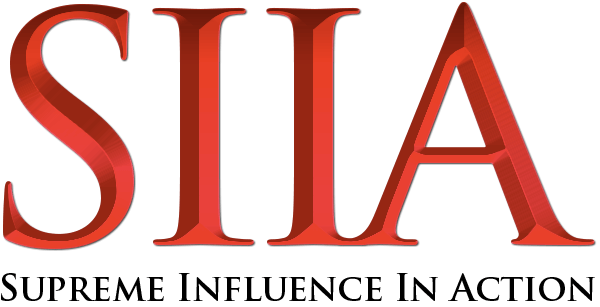
July 12th - 14th, 2024
LIVE Virtual Experience

Aug. 5th - 13th, 2024
Bali, Indonesia
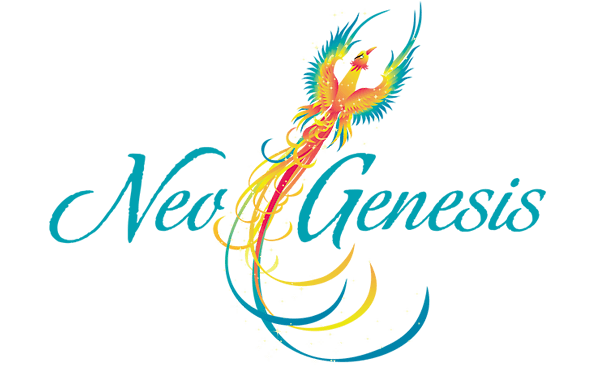
Nov. 14 - 17, 2024
Cancún, Mexico

May 17 - 18, 2025
2 Days LIVE Online

